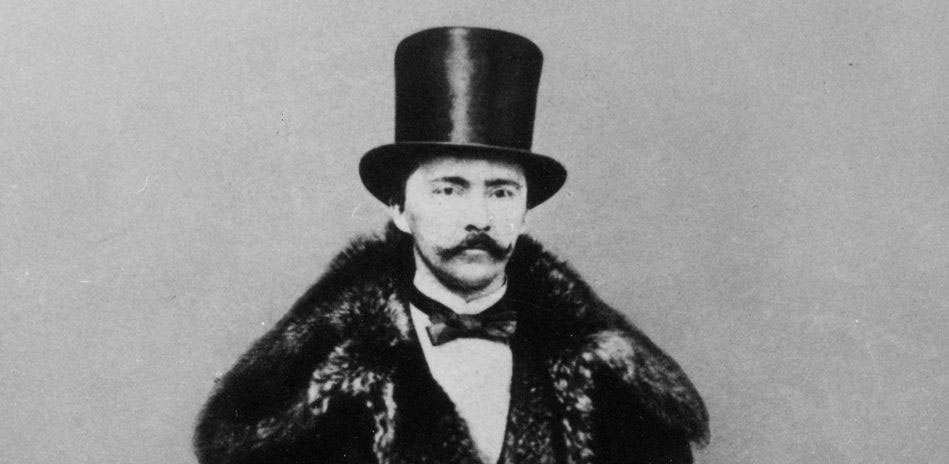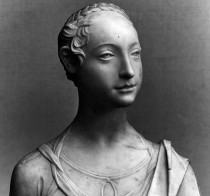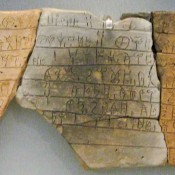“We want to highlight the various aspects of Schliemann’s life in order to understand his extremely diverse personality. This is why we have chosen ‘The Worlds of Schliemann’ as a title for the exhibition” said Matthias Wemhoff, Professor of Prehistory at the Freie Universität Berlin and Director of the Museum für Vor- und Frühgeschichte of the German capital in his interview with the Athens and Macedonian News Agency. The exhibition “The Worlds of Schliemann
His Life. His Discoveries. His Legacy” will run from 13.05.2022 to 06.11.2022 at the James-Simon-Galerie and the Neues Museum.
“Everything went smoothly except for the transfer of exhibits from the Hermitage in St. Petersburg, where Schliemann had lived. These did not come because of the war in Ukraine. We had planned to make a second stop of the exhibition in Moscow to reunite for the first time all the findings with the Priam’s Treasure which had been transferred from Berlin to the Pushkin Museum after World War II, but of course that will not happen either,” Matthias Wemhoff added.
“I am convinced that Schliemann actually discovered Troy. This has also been confirmed by the fact that this place was visited by Alexander the Great and was repeatedly sought out there before him and by the Romans as well. So I think everything points to the existence of Troy at this particular location,” said Wemhoff.
Regarding Priam’s Treasure, he noted that “it is one of the most glaring cases of looted art and at some point we will have to find a solution with the Russians under new conditions”. As for Erdogan’s request for its return to Turkey, he says: “For me there is no reason for such a claim. This is a legally uncontested case”.
Asked if the Parthenon marbles should be returned to Athens, he replied: “It would be difficult for me to express an opinion on this, but there are certainly serious arguments in Athens’ favour”.
The exhibition is being organized on the occasion of the 200th anniversary of Schliemann’s birth and opens on May 13.
Antonis Polychronakis (AMNA): Are you ready for the exhibition “The Worlds of Schliemann”, professor?
Matthias Wemhoff: Yes, we are completing the design of the space where only the exhibits on loan from the National Archaeological Museum will be displayed. In this way, along with the exhibits from Tiryns and Orchomenos, Schliemann’s excavations in Greece will be presented in full. The exhibits of Troy come from our own collections. Everything went smoothly except for the transfer of exhibits from the Hermitage in St. Petersburg, where Schliemann had lived. These did not come because of the war in Ukraine. We had also planned to make a second stop of the exhibition in Moscow to reunite for the first time all the findings with Priam’s Treasure which had been transferred from Berlin to the Pushkin Museum after World War II, but of course that will not happen either.
A.P: Why did you choose this title?
—Because we wanted to highlight the various aspects of Schliemann’s life and understand his extremely diverse personality with which many trends of his time are connected. The first part of the exhibition presents his life until its great turning point. This took place when the then vastly rich merchant and businessman Schliemann left everything to his family in St. Petersburg and having travelled for a while to the ends of the earth decided to study philology, philosophy and literature at the Sorbonne after the age of 45. The shift to Greek myths, the exploration through time came suddenly and was a journey to completely different periods and places . Hence the title “The Worlds of Schliemann”.
A.P: How does the exhibition develop from there?
—The next important stop is Troy. Left and right on the high walls, the visitor can see the successive layers of soil that have settled over the centuries and the corresponding archaeological finds. Also, for the first time, the way Schliemann dealt with ceramic vessels which would then play an important role in the dating. The public tends to focuse only on the gold finds from Troy and Greece, but Schliemann himself was always much more interested in the simple ceramic finds.
A.P: Why?
—Because they provided historical information. Schliemann excavated the Hisarlik mound in depth because he believed the most valuable find to be at the bottom of the hill. Excavating the hill of Troy, he found that specific types of vessels existed in different layers of the soil, but he could not date them at the time. He had to compare them and this is exactly what he did with his subsequent excavations in Mycenae. He is the first to take the great step towards understanding archaeology as stratigraphy and its importance can be understood in conjunction with these excavations.
A.P: And what did he find?
—By comparative stratigraphy, he discovered that similar ceramic fragments, which are found in Mycenae, also exist in Troy and must be related in time. Previously he could not date them and therefore was not able to realize that Priam’s treasure is considerably older than the one of Agamemnon. This was achieved only by comparing the ceramics from Greece. Therefore, this excavation was absolutely crucial in the eventual discovery of chronological indications for prehistory in general. Let me clarify this further: Schliemann was the one who discovered the advanced Bronze Age cultures in the region. We did not know before if they really existed. This was archaeology’s huge step forward into terra incognita.
A.P: He was criticized however for destroying more than he needed during his excavations.
—The criticism is correct and of course today we would conduct the excavations completely differently. However, with these methods we probably would not have discovered Troy if all the earlier walls had been preserved and we did not advance deeper. Schliemann also had his doubts about the methods, but you cannot blame him because he went ahead in scientifically unknown areas. He was therefore a pioneer, developing and constantly seeking out new excavation methods; he never stopped exploring, this being one of his characteristics. He could easily have stopped after finding Priam’s Treasure in 1873, but he did not. He went to Greece, brought back Wilhelm Dörpfeld, the pioneer of stratigraphic excavation and had discussions with him, wanting his opinion.
A.P: Was he right to believe that he had discovered Troy, or is it still disputed?
—The controversy over the existence of Troy has now subsided. There are of course still a few who have their doubts. We shall never be 100% sure, but I’m convinced Schliemann really discovered it. This is confirmed by the fact that the place had been visited by Alexander the Great and was sought at that spot again and again before him and also by the Romans. So I think everything points to the existence of Troy in this location.
A.P: In 1873, Schliemann discovered “Priam’s Treasure”. Did he actually miscalculate its date by 1,240 years?
—Yes, it predates the Trojan War. Of course, he had no chance of classifying it correctly, because there was no dating of pottery yet. But we are in the 3rd millennium BC, so it is important evidence of the Early Bronze Age. This is one of the most important findings in archaeology to date and a great success story for Schliemann.
A.P: Priam’s Treasure ended up in Berlin, given by the then Ottoman Empire and after the end of World War II found itself in Moscow. To whom does it ultimately belong?
—Schliemann brought it purposely to Athens, and of course his wife’s family and the Athenian society played a part in this, because it would reinforce the nation’s recently awakened self-confidence .They could not have imagined that the Treasure would end up in the hands of the Turks. The Greek government did not accept Schliemann’s donation because it was persistently claimed by the Ottoman Empire. The Greek state did not dare to enter this conflict and Schliemann sent it to Germany. The post-WWII conflict between the Russians and the Germans takes on a different dimension because of the war in Ukraine. If Ukrainian museums are being looted today, then this is a behaviour we also saw after World War II. This is one of the most glaring cases of looted art and we will have to find a solution at some point under new circumstances.
A.P: Turkish President Erdogan also asked for it…
—For me there is no reason for such a demand. This is a legally undisputed case.
A.P: By the way, to whom do you think the Parthenon marbles belong, to Athens or London?
—Naturally I could hardly express an opinion on this, but there are certainly serious arguments in favour of Athens.
A.P: Lastly, do his positive qualities prevail and is it worth honouring Schliemann 200 years after his birth?
Henry Schliemann is one of the great figures of archaeology; he was far ahead of his contemporaries. He is absolutely worth remembering. When he decided to excavate somewhere, nothing stopped him. Naturally he sought and achieved publicity. He had exclusive contracts with the Times and the Augsburger Allgemeine, Germany’s most important newspaper of the day, and whatever he found soon became known around the world. He himself paid for a large publication every year and published a relevant book that was so scientific that it bothered the experts. He made the first publication with photographs. He corresponded systematically with important personalities, informing them on what he had found and asking for their opinion. If anyone criticized him, he sought a discussion with them. Telling stories is also an important aspect of life, but I think that sometimes he tended to fantasize about himself. He was not an easy man, but one must take into account the complexity of such personalities. One may even be inspired and fascinated by their lives; re-evaluate them without seeing them only in the light of today. After all, it is amazing to make your dream come true, reinvent yourself, try out everything and always be able to cope with new situations.





